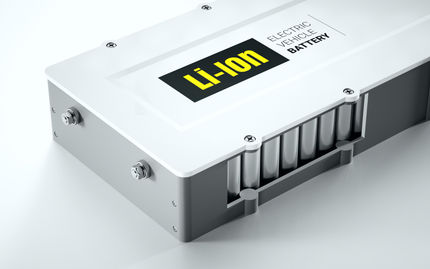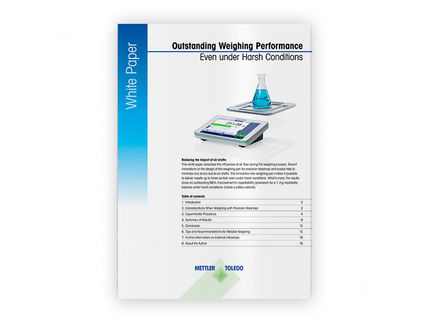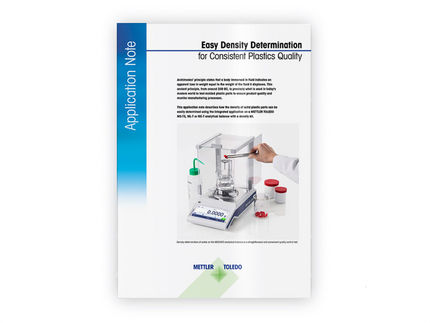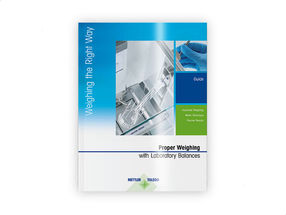
Mettler-Toledo
Weighing the right way
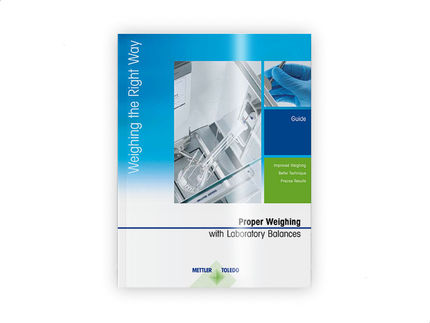
Guidelines for accurate results and better weighing techniques
Factors affecting weighing accuracy can negatively influence the results of the whole analysis, therefore it is important to be aware of the rules that need to be followed when working with laboratory balances.
Balances have developed to the point that, in general, no special weighing room is necessary, except maybe for ultra-micro balances.
Technological advances in electronics have considerably simplified the operation of balances, reducing weighing times. However, this apparent ease of use can lead to insufficient care being taken to avoid the negative influence on analyses results caused be multiple factors affecting weighing accuracy. External influences are defined as physical effects which are measurable for all laboratory balances. Examples of external influences include:
- Electrostatic forces
- Airflow
- Environmental vibrations
- Magnetism effects
- Evaporation
- Moisture uptake
The purpose of this guide is to identify most common factors affecting weighing accuracy and to explain the basic rules of weighing the right way with laboratory balances
Advertisement
White Paper classification
White papers on related topics
Products on related topics
Manufacturers of similar products
See the theme worlds for related content
Topic world Weighing
Precise weighing is critical in laboratory and industrial environments. From accurate dosing of chemicals for research experiments to mass production of products, precise weight determination is often the first and most critical step. Modern balances and weighing instruments are sophisticated, offer impressive precision and are resilient to external influences such as temperature and humidity.

Topic world Weighing
Precise weighing is critical in laboratory and industrial environments. From accurate dosing of chemicals for research experiments to mass production of products, precise weight determination is often the first and most critical step. Modern balances and weighing instruments are sophisticated, offer impressive precision and are resilient to external influences such as temperature and humidity.




